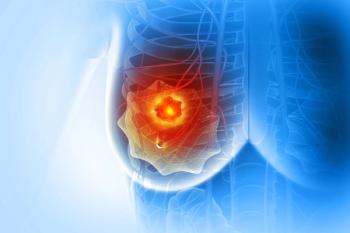
Integration of DBS Shows Promise Identifying Dysfunctional Brain Circuits, Treating Brain Disorders
Using deep brain simulation, study authors identified networks in the brain that can be used to better treat Parkinson disease, dystonia, Tourette syndrome, and OCD.
Study results published in Nature Neuroscience demonstrate how deep brain simulation (DBS) is used to map a “human dysfunctome,” or a collection of dysfunctional brain circuits associated with different disorders. The authors identified optimal networks within the frontal cortex which can be utilized to better treat Parkinson disease, dystonia, obsessive compulsive disorder (OCD), and Tourette syndrome.1
If brain disorders occur, the connections between the frontal cortex and basal ganglia—which control cognitive and motor functions—may become affected, resulting in overactive or malfunctioning communication. The investigators note that prior research demonstrated that electrically stimulating the subthalamic nucleus can help with improving symptoms related to these disorders.
Study authors analyzed data from 534 DBS electrodes in 261 patients to better understand the relationship. Of these patients, 70 were diagnosed with dystonia, 127 with Parkinson disease, 50 with OCD, and 14 with Tourette syndrome. Further, the investigators also used computer simulations to record tracts that were activated in patients with optimal or suboptimal outcomes.
“We can take this technique further and finely segregate dysfunctional circuits in order to have greater impact with treatment,” said lead author Barbara Hollunder, MSc, Movement Disorders and Neuromodulation Unit in the Department of Neurology, Charité – University Medicine Berlin, in a press release. “For example, with OCD, we can look at isolating circuits for obsessions versus compulsions and so on.”
The results indicated that specific circuits within the brain had become dysfunctional in each of the 4 conditions—the primary motor cortex in Tourette syndrome, the supplementary motor cortex in Parkinson disease, and parts of the cingulate cortex in OCD. Further, the study authors note that there were partial overlaps in the identified circuits, suggesting that interconnected pathways are disrupted in the 4 conditions.
The investigators also confirm that the findings are supportive of the idea that cross-communication or integration and open-loop architectures, despite the amount of separation between loops. The authors note that the overlaps were much more prominent between Tourette syndrome and dystonia, and that the concept of processing gradients—as opposed to completely separated loops—demonstrates preferential mappings between neuroanatomy and stimulation effects.Additionally, the investigators note that the identified circuits directly represent therapeutic targets that may inform stereotactic targeting in neurosurgery, as well as potential non-invasive validations at the cortical level.
Further, sensorimotor and cerebellar loops were found to be linked to symptom improvements in dystonia, fronto-subthalamic loops connected the SMA to the STN in Parkinson disease, and the streamline bundle that was identified in the OCD cohort had shown to be an effective response streamline target beyond the stimulation of the STN region. The authors also note that the network correlations to retore functionality in Tourette syndrome are less established through the application of subthalamic DBS.2
“We were able to use brain stimulation to precisely identify and target circuits for the optimal treatment of 4 different disorders,” said co-corresponding author Andreas Horn, MD, PhD, Center for Brain Circuit Therapeutics in the Department of Neurology at Brigham and Women’s Hospital and the Center for Neurotechnology and Neurorecovery at Massachusetts General Hospital, in the press release. “In simplified terms, when brain circuits become dysfunctional, they may act as brakes for the specific brain functions that the circuit usually carries out. Applying DBS may release the brake and may in part restore functionality.”1
References
- Researchers Use Deep Brain Stimulation to Map Therapeutic Targets for Four Brain Disorders. News release. February 22, 2024. Accessed March 1, 2024.
https://www.massgeneralbrigham.org/en/about/newsroom/articles/deep-brain-stimulation-maps-targets-for-four-brain-disorders - Hollunder, B., Ostrem, J.L., Sahin, I.A. et al. Mapping dysfunctional circuits in the frontal cortex using deep brain stimulation. Nat Neurosci (2024). doi:10.1038/s41593-024-01570-1
Newsletter
Stay informed on drug updates, treatment guidelines, and pharmacy practice trends—subscribe to Pharmacy Times for weekly clinical insights.

















































































































































































































